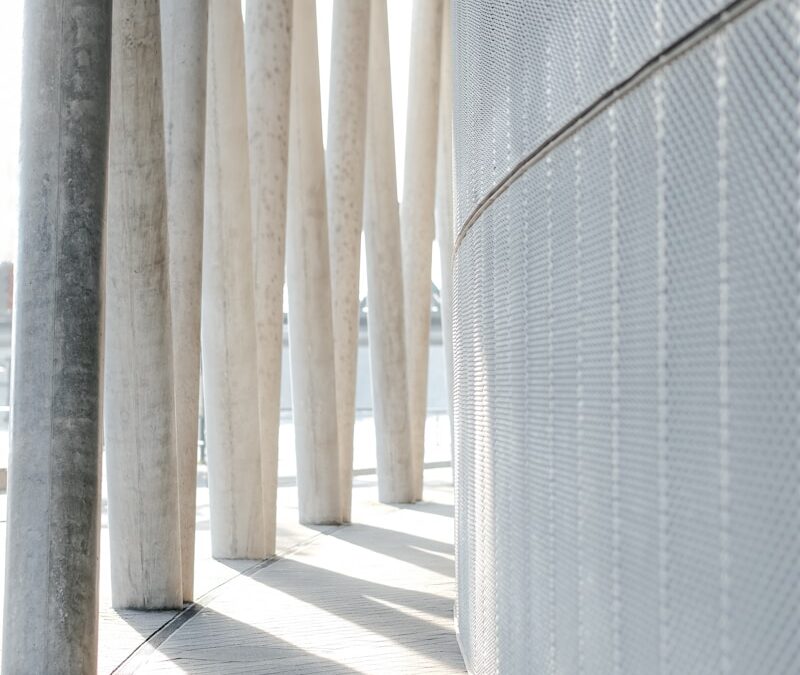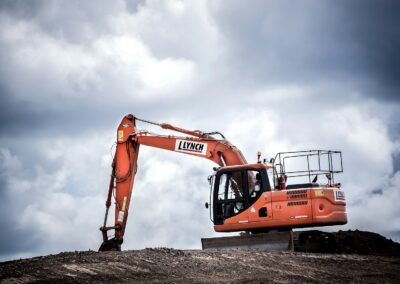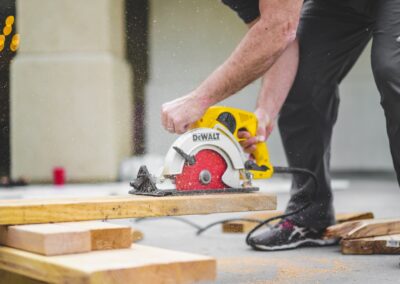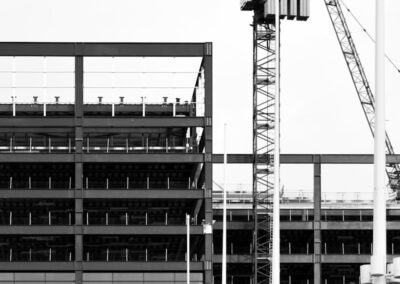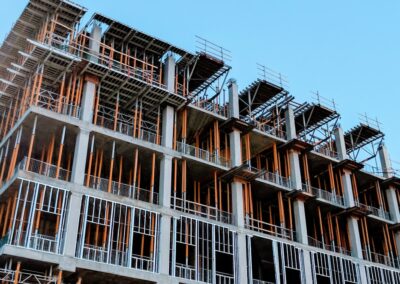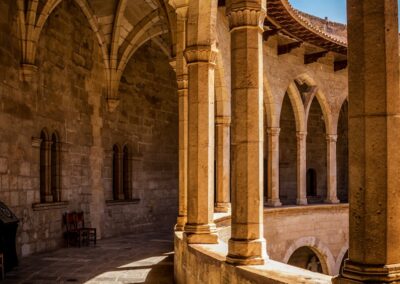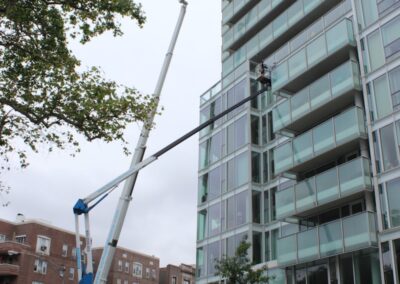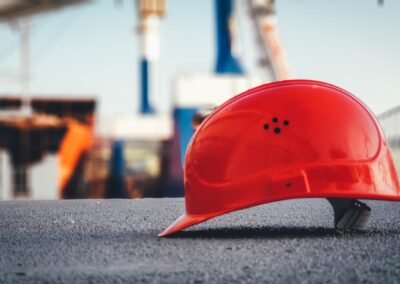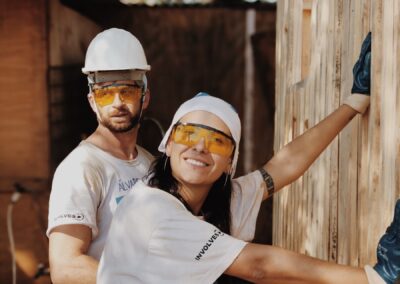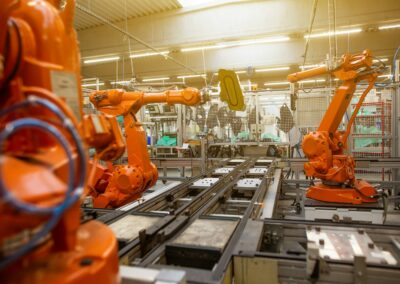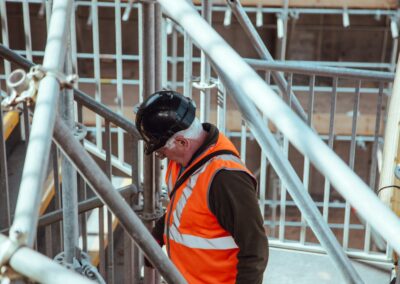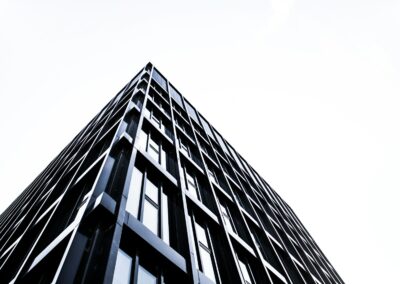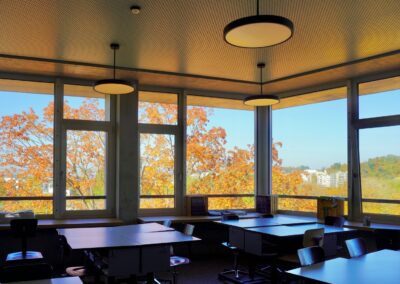Leveraging Digital Twins for Precise Planning and Simulation
Introduction to Digital Twins in Building Design
The integration of digital twins in building design is revolutionizing the architectural and construction industries. By creating detailed virtual models, digital twins enable precise planning and simulation of building projects, enhancing the overall design process. These virtual replicas are highly accurate, providing a comprehensive view of a building’s physical and functional characteristics. In cities like Riyadh and Dubai, where architectural innovation is paramount, digital twins are becoming an essential tool for developers and architects. The ability to simulate various scenarios and design options in a virtual environment allows for more informed decision-making, ultimately leading to better-designed, more efficient buildings.
Digital twins facilitate real-time monitoring and adjustments during the construction phase, ensuring that the project adheres to the original design and specifications. This technology also aids in identifying potential issues before they arise, reducing the risk of costly delays and modifications. In rapidly growing urban centers like Riyadh and Dubai, the efficiency and precision offered by digital twins are invaluable for managing complex construction projects. The adoption of digital twins in building design reflects a broader trend towards leveraging advanced technologies to enhance urban development and create smart, sustainable cities.
AI and Generative Design in Architecture
The use of artificial intelligence, particularly generative AI, in conjunction with digital twins, is further enhancing the building design process. Generative AI algorithms can analyze vast amounts of data to generate optimal design solutions based on specific criteria such as environmental impact, energy efficiency, and structural integrity. In the UAE, innovative projects are utilizing AI-driven digital twins to explore a wide range of design possibilities, ensuring that the final building design is both aesthetically pleasing and functionally superior.
This AI-driven approach allows architects and engineers to explore numerous design iterations quickly, selecting the best possible option based on data-driven insights. By integrating generative AI with digital twin technology, the design process becomes more agile and responsive to changing requirements. This synergy between AI and digital twins is particularly beneficial in regions like Saudi Arabia and the UAE, where there is a strong emphasis on architectural excellence and sustainability. The ability to create and refine complex building designs in a virtual environment not only improves the quality of the final product but also accelerates the development timeline.
Real-World Applications and Case Studies
Real-world applications of digital twin technology in building design are already demonstrating its transformative potential. For instance, in Dubai, the development of smart buildings and infrastructure projects is being significantly enhanced by digital twins. These virtual models are used to simulate various environmental conditions and their impact on building performance, enabling designers to create more resilient and adaptive structures. In Riyadh, digital twins are playing a crucial role in the planning and execution of large-scale urban development projects, ensuring that they are completed on time and within budget.
One notable case study involves the use of digital twins in the construction of a major commercial complex in Dubai. By utilizing digital twins, the project team was able to optimize the building’s energy efficiency, reduce material waste, and streamline the construction process. The success of this project underscores the value of digital twin technology in enhancing building design and construction efficiency. As more projects in Saudi Arabia and the UAE adopt this technology, it is expected to become a standard practice in the region’s architectural and construction industries.
The Future of Building Design with Digital Twins
Enhancing Sustainability and Efficiency
Digital twin technology is poised to play a pivotal role in promoting sustainability and efficiency in building design. By providing detailed insights into a building’s performance, digital twins enable architects and engineers to make data-driven decisions that enhance energy efficiency, reduce carbon footprints, and optimize resource utilization. In smart cities like Riyadh and Dubai, where sustainable development is a key priority, digital twins offer a powerful tool for achieving environmental goals. The ability to simulate various design options and their impact on energy consumption and emissions allows for the creation of greener, more sustainable buildings.
Furthermore, digital twins facilitate the integration of renewable energy sources and smart building systems, enhancing the overall efficiency and sustainability of urban developments. As cities around the world strive to meet stringent environmental standards, the adoption of digital twin technology will be crucial in driving sustainable architectural practices. The commitment of Saudi Arabia and the UAE to leveraging advanced technologies for sustainable development positions them as leaders in the global push for greener cities.
Blockchain and Data Security in Building Design
The integration of blockchain technology with digital twins enhances the security and transparency of building design and construction processes. Blockchain provides a secure, immutable ledger for recording all transactions and data related to a building project, ensuring that information is accurate and tamper-proof. This is particularly important for complex projects in cities like Riyadh and Dubai, where multiple stakeholders are involved, and data integrity is crucial. By using blockchain, project teams can ensure that all design and construction data is securely stored and easily accessible to authorized parties.
Blockchain technology also enhances collaboration among different stakeholders by providing a transparent and secure platform for sharing information. This improves communication and coordination, reducing the risk of errors and delays. In the UAE, innovative projects are exploring the use of blockchain to streamline the building design process, ensuring that all data related to digital twins is secure and reliable. The combination of digital twin technology and blockchain represents a significant advancement in the architectural and construction industries, promoting greater efficiency, security, and collaboration.
The Metaverse and Virtual Collaboration
The Metaverse offers exciting possibilities for enhancing collaboration and innovation in building design. By integrating digital twin technology into the Metaverse, architects, engineers, and stakeholders can collaborate in immersive virtual environments, sharing ideas and exploring design options in real-time. This virtual collaboration enhances creativity and innovation, allowing project teams to visualize and refine building designs more effectively. In cities like Dubai and Riyadh, where architectural innovation is highly valued, the Metaverse provides a platform for pushing the boundaries of design and construction.
Virtual collaboration in the Metaverse also enables more inclusive and participatory design processes, allowing stakeholders from different locations to contribute to the project. This is particularly beneficial for international projects, where team members may be spread across different countries. The use of the Metaverse for virtual collaboration aligns with the broader trend towards digital transformation in the architectural and construction industries, offering new ways to enhance creativity, efficiency, and project outcomes.
Conclusion
The integration of digital twins in building design is transforming the architectural and construction industries by providing detailed virtual models for precise planning and simulation. The adoption of advanced technologies such as AI, blockchain, and the Metaverse further enhances the capabilities of digital twins, promoting sustainability, efficiency, and innovation. In regions like Saudi Arabia and the UAE, where architectural excellence and sustainable development are key priorities, digital twin technology is poised to play a crucial role in shaping the future of building design.
As the use of digital twins becomes more widespread, the benefits of this technology will become increasingly evident, leading to better-designed, more efficient, and sustainable buildings. The commitment of Saudi Arabia and the UAE to leveraging cutting-edge technologies for urban development positions them as leaders in the global architectural landscape, driving innovation and excellence in building design.
—
#DigitalTwins #BuildingDesign #VirtualModels #PrecisePlanning #SimulationInArchitecture #AIInConstruction #SmartCities #GenerativeAI #Riyadh #Dubai

